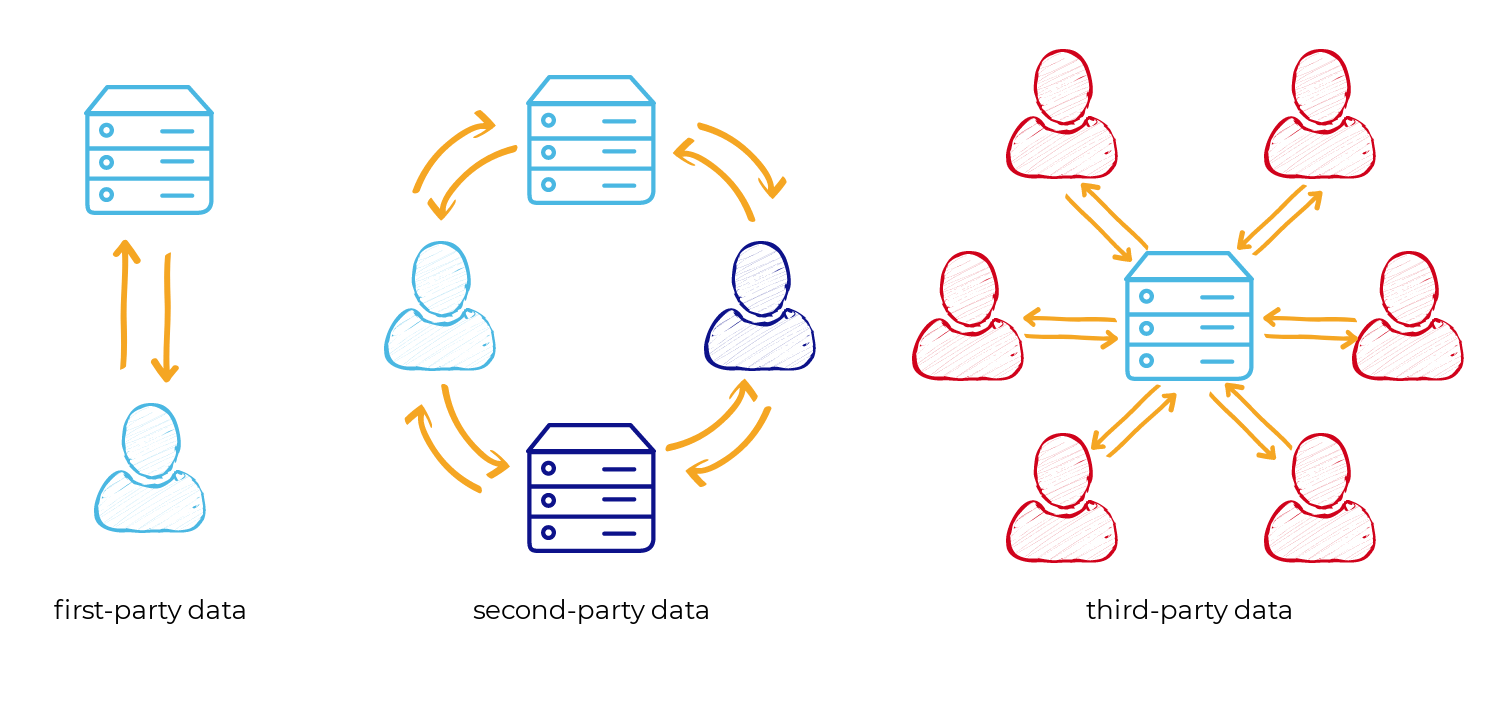What is First Party Data?
Data is essential for success in marketing today. Different types of data provide valuable information to marketers and increase the success of advertising campaigns. First party data in particular is one of the most important data sources right now, so it is vital to understand how to capture it, gather it, and use it.

What is First Party Data? - Definition, Use Cases, Key Trends
First party data comes directly from your audience or customers. It consists of valuable information about your audience, such as:
- The behaviors, actions, or interests of your audience based on their behavior on your website
- Your CRM data
- Subscription data, which may include certain demographic and geographic information
- Social data from other social platforms
- Other sources of information gathered from surveys or feedback forms
Because first party data comes straight from your audience or customers, it is free and considered extremely useful for marketing purposes. You also own this data, so there are fewer privacy concerns associated with collecting, storing, and using it. With the depreciation of third party data, first party information is more valuable than ever.
How Does First Party Data Differ from Second and Third Party Data?
First party data differs from second party and third party data in a few key ways.

Second party data is first party data from someone else, meaning you didn’t collect it, nor do you own it. Companies can purchase second party data from sources that are the original collectors of the data. This information can be beneficial for advertising to potential customers. Because second party data is just someone else’s first party data, it includes the same information listed above collected by someone else.
Third party data is purchased from outside sources that are not the original collectors of the data. Data aggregators collect information from a variety of platforms and websites and then charge to provide this information to companies based on specific indicators, such as industry, online behavior, interests, demographics, etc. While it still provides similar information to first party data, third party data is sold on a large scale without information about the original source or owner of the data.
Why is First Party Data Important in Today’s Advertising World?
First party data has always been important for marketing and advertising efforts. However, now it is becoming essential as large internet browsers such as Google Chrome, Safari, and Firefox are removing third party cookie tracking options to increase online user privacy. Because of this, third party data will no longer be able to be collected, stored, and sold. So, companies will need to rely even more on their first party data to reach and target their current and potential customers. Fortunately, there are a variety of ways to effectively use first party data to increase marketing efforts and strategically grow your business.
What are the Use Cases for First Party Data?
First party data can be used for a variety of purposes. Plus, it is very reliable information because you know where it came from and you own it. Here are a few use cases for first party data.
Predictions
Because first party data is extremely relevant, accurate, and reliable, you can use it to predict future patterns. Information collected such as behaviors, interests, and actions can be used to determine future actions.
For example, if a website visitor continuously visits your website and looks at purses multiple times, maybe even placing one in their online shopping cart, you can predict their future behavior: the purchase of a purse. You can also predict the future patterns of groups of people. For example, by measuring the number of clicks on a product photo vs video, you can determine which visual element does better and will likely continue to do better in the future. You can use first party data to make predictions and changes based on those predictions to better serve your audience.
Personalization
Personalization is extremely important when it comes to advertising. Consumers are more likely to engage with a brand when they provide some aspect of personalization in their marketing efforts. Using first party data, you can create content that speaks directly to a target audience based on their behaviors and actions on your website and across your social platforms.
Retargeting
First party data is also used for audience retargeting. Retargeting is a way to reach potential customers who have shown an interest in your product or service. You can also use first party data to target a lookalike audience–or an audience that has similar behaviors and interests as your active customer base. When you browse a product online and then leave that website and visit another one, you may notice an advertisement from the previous website showing up. That is considered a retargeting advertising campaign that was made possible via first party data.
Now is the time to ensure you have solid strategies in place to collect, store, and use first party data for your marketing and advertising efforts.